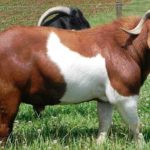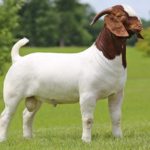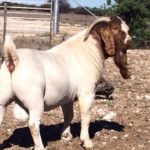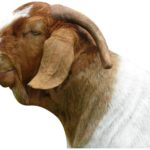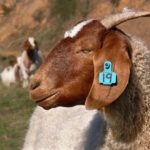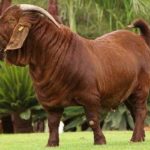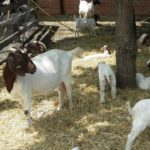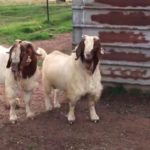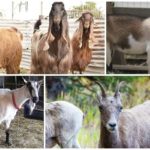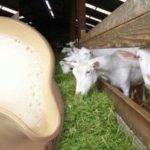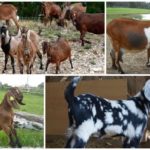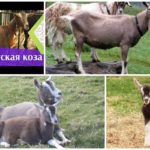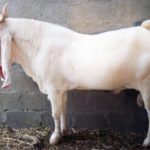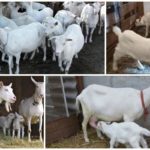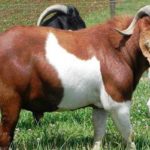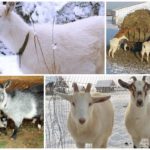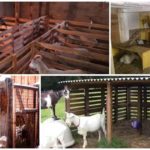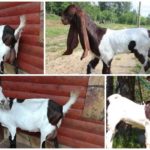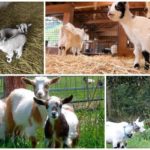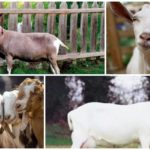The Boer is an exotic breed of goat. These are heat-loving animals that are bred for their meat in southern Africa. They feed on bushes and grass and gain 100 kilograms of weight in just a few months. Boer goats are profitable to breed because they do not require any unusual feed. True, few people are involved in industrial production. Breeding animals cost about one thousand dollars; goat meat has a specific taste and smell.
Origin story
The Boer breed was bred in South Africa at the beginning of the 20th century specifically for meat. African goats and their relatives from Europe and India took part in the crossing. By the beginning of the 80s of the last century, these animals spread throughout the globe. The leaders in breeding Boer goats are the countries of Africa, Latin America, as well as the USA, New Zealand, and Australia.
The word "Boer" comes from the Dutch "boer", which means "farmer". Many European farmers know this breed and have been breeding it for several decades. After all, Boer goats grow quickly, eat mainly grass and hay, gain weight well, and just 8-18 months after birth they can be sent for slaughter. On average, one animal gains 60-100 kilograms of weight, that is, it produces 30-50 kilograms of meat. The Boer is the most productive meat breed. Such animals are not bred to produce milk.
General description and characteristics of the breed
Boers are distinguished from others by their unique coloring. This breed has a large white body and a brown head. The animal grows up to 1 meter in height and length. The weight of an adult goat is 110-130 kilograms, the weight of an adult female is 85-105 kilograms.
Distinctive features of the Boer breed:
- short, smooth coat;
- small erect ponytail;
- the udder has 2 or 4 teats;
- short, thick legs with large hooves;
- the body is stocky, strong, with a wide chest, round belly;
- well-developed muscles on the back, chest, hips;
- horns of medium length, curved back;
- ears are hanging, medium size;
- powerful head with a convex nasal septum.
The Boer breed has a calm character. They are well suited for keeping with other animals.Unlike cows and sheep, Boer goats eat not so much grass as bushes and leaves of low-growing trees.
This breed has tender meat similar to veal. Animals are slaughtered at the age of 8-18 months. During this period they weigh about 60-100 kilograms. Animals reach sexual maturity at 5 months of age. True, they try to cover the females a little later. Pregnancy lasts five months. During the first lambing, females give birth to no more than one kid weighing 4 kilograms.
The queen's babies are fed for up to 3 months. All the milk goes to him. This breed is rarely milked. A goat produces about 1-2 liters of milk per day. The kid grows quickly, gaining 250-400 grams of weight every day. Young goats are castrated in infancy to make their meat more tender and flavorful. At 4 months of age, animals weigh 30 kilograms.
Advantages and disadvantages
Advantages of breeding the Boer breed:
- obtaining dietary meat;
- rapid weight gain on grass and hay alone;
- weight 50-70 kilograms in 8-10 months;
- slaughter meat yield 54%;
- excellent adaptability to the climate of the middle zone;
- undemanding to feed;
- females can give birth 2 times a year;
- excellent immunity.
Disadvantages of breeding the Boer breed:
- high cost of breeding animals;
- to obtain high-quality meat, you need goats that are 75% Boer;
- poor adaptation to frost;
- the need to trim hooves twice a year;
- They eat everything within their reach (grass, bushes, flowers, tree branches).
Requirements for maintenance and care
Boer goats are profitable to breed. After all, they grow quickly, gain weight well, and in just a year they produce about 50 kilograms of clean meat. True, breeding animals are very expensive.It is necessary to create the most comfortable conditions for goats so that they do not die, but grow up and give birth to offspring.
For the Boer breed, you need to build a goat house with an area of 4 square meters. meters per animal. In winter, this room must be heated if the air temperature is below 15 degrees Celsius. Infrared lamps are used for heating. In the goat shed, an exhaust hood is installed, windows and doors are made, a manger for hay, a drinking bowl for water, and a feeder for finely chopped vegetables and grain are installed.
Straw is laid on the floor. The litter is replaced as it gets dirty, that is, every day. It is forbidden to keep goats in damp and dirty conditions. Animals can get sick if they sleep on wet, dirty and cold bedding.
Goats are fed 3 times a day, and in between feedings they are given clean water (a bucket per goat). In summer, animals can graze on pasture all day long. Only at lunchtime and in the heat are they driven into the goat's coop for several hours. Animals should not be taken out to pasture in rainy weather. In winter, Boer goats are kept indoors. They are taken outside only in the spring, when the air temperature reaches 15 degrees Celsius and green grass appears in the meadow.
Boer goats need to have their hooves trimmed twice a year, as they grow a lot if the animals are kept motionless in a stall all winter. To process this part of the limbs you need special scissors or pruners. Hooves are trimmed the first time before wintering, the second time in the spring, before going out to pasture. In the summer they grind off on their own.
What to feed Boer goats
Animals of this breed must be fed with high-quality feed. In summer, goats are grazed on pasture. Animals recover well if they eat clover, alfalfa, cereals and legumes.You need to put a salt lick in the goat house so that the goats replenish the salt reserves in their bodies. Animals readily eat low berry bushes and eat branches and leaves of trees (willow, linden, aspen, maple).
In winter they are fed sun-dried hay (4-5 kilograms per day). Pine and spruce branches are given as a vitamin supplement. The diet should include finely chopped vegetables (carrots, beets, pumpkin). In winter, goats are given premixes, pharmaceutical vitamins and minerals.
Animals gain weight well if they are fed legumes, small amounts of grain, sweet vegetables, silage, bran, and mixed feed. Bone meal and chalk are added to the feed. For the winter, it is recommended to prepare 500 kilograms of hay (per individual).
Nuances of breeding
To breed the Boer breed, you must have at least one breeding goat in your herd. To obtain the highest quality hybrid, Nubian goats are suitable. For crossing, it is allowed to use females of the following breeds: Kiko, Angora, Spanish, Jamnapari. The resulting offspring must be crossed again with a purebred Boer goat. It is prohibited to allow closely related animals to mate.
They try to cover the females in the fall so that they give birth to kids in early spring. Mating takes place when the goats are 12 months old. True, they reach sexual maturity six months after birth. Pregnancy lasts 5 months. The queens feed the kids milk for 90 days. You can milk a goat 3 weeks after the birth of the baby. They take a small amount of milk and leave the rest for the kid.For the first time, a goat gives birth to one baby. Over the course of a year, a female can become pregnant twice. The second time she has 1-2 kids.
Protection against diseases
Goats at the age of 3-4 months must be vaccinated. Animals are vaccinated against rabies, brucellosis, anthrax, parasites, and foot-and-mouth disease. If necessary, they are vaccinated against tetanus and enterotoxemia. In regions with a high risk of contracting encephalitis, animals can be vaccinated against this disease.
Important! It is recommended to check the details of vaccination with your local veterinarian. Only healthy kids are allowed to be vaccinated.
Distribution in Russia
Boer goats are bred in the Russian Federation. It is better to grow these animals in the central and southern regions, that is, in places with a warm climate. Boer goats do not tolerate frost well and often get sick during the cold season.
The animals eat mainly grass and hay, meaning the cost of feeding them is minimal. You can buy a breeding goat for 1-2 thousand dollars. In Russia, such animals are bred for decorative and personal purposes, and less often for industrial meat production. The fact is that an adult animal weighs, on average, 100 kilograms. It produces about 50-60 kg of meat. On the market it costs 10-20 dollars per kilogram. For 50 kg of meat they usually give about 500-1,000 dollars, that is, almost 500-1,000 dollars less than what a breeding animal costs at a young age.
What is the price?
Pedigree Boer goats can be bought in South Africa and the USA. Delivery of the animal, taking into account its cost, will cost the buyer 3-8 thousand dollars. You can buy goat sperm, it will cost less ($50). Local farmers sell these animals for 1-2 thousand dollars.

